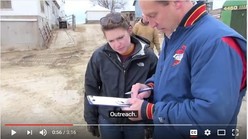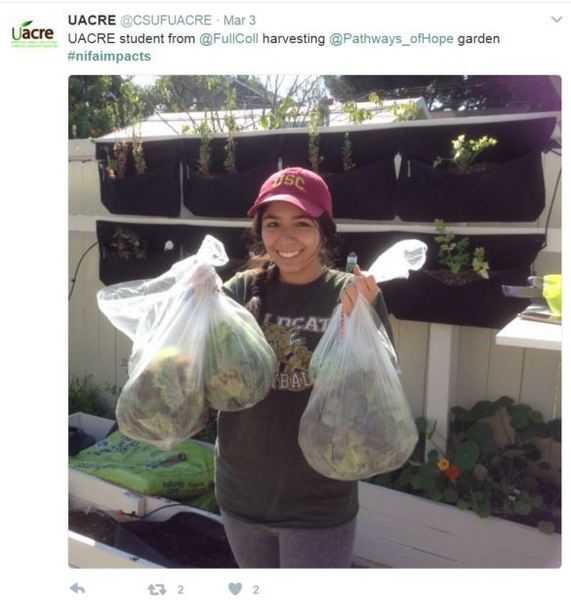|
|
|
Fresh from the Field is a weekly album showcasing transformative impacts made by grantees funded by the National Institute of Food and Agriculture.
March 9, 2017
|
|
Success Stories of the Week
 Diversity helps trees thrive, reduce pollution
In
the recent issue of Nature Ecology & Evolution, University of Minnesota researchers shared how diverse mixtures of trees did better than tree stands with single species. The team, along with partners from the University of
Quebec, studied 37 tree plots for four years. The plots included 12
different species found in forests throughout the northern United States. The scientist noted that plots with multiple species filled in vertical gaps more effectively with branches and leaves, leading to more tree growth, higher wood production, and higher rates of carbon dioxide removal from the atmosphere.
“It’s a common hypothesis that complementarity matters,” says lead
author Laura Williams, a graduate student in ecology, evolution and behavior at the University of Minnesota.
Currently, less than one percent of the world's plantation forests contain more than one species of trees. This NIFA-funded project reveals the benefits of planting multiple species to boost forests’ ability to produce wood and remove carbon dioxide from the atmosphere.
Read the UMN story here.
|
 The truth about the 'five-second' rule
Rutgers University researchers have disproven the widely accepted notion that it’s okay to pick up food and eat it within a “safe” five second window. Donald Schaffner, professor and extension specialist in food science at Rutgers University, found that moisture, type of surface, and contact time all contribute to cross-contamination. In some instances, the transfer begins in less than one second.
“The five-second rule is a significant oversimplification of what actually happens when bacteria transfer from a surface to food,” Schaffner said. “Bacteria can contaminate instantaneously.”
Read about this NIFA-funded study at Rutgers Today.
|
News Coverage
 Diagnosis at your fingertips
A NIFA-funded venture by the New York State Agricultural Experiment Station in Geneva and the College of Tropical Agriculture and Human Resources, University of Hawaii-Manoa has resulted in a new iPad application, Estimate,
that helps determine plant disease diversity. The program uses Standard Area
Diagrams (SADs), a series of photographs of diseased leaves. Users can examine a leaf in the field and compare it with SADs to estimate the disease severity.
“This app is useful
for crop consultants and research scientists looking to cut costs and improve
the time and accuracy for assessing disease severity in plants,” said
co-developer Sarah Pethybridge of Cornell University. The app is available for download on iTunes.
Read about Cornell's invention here.
.
|
Video
 Recycling animal waste to increase crop production
Each year, Iowa farms produce more than $1 billion in manure used for fertilizer. With NIFA funding, the Iowa
State University (ISU) Extension office provides training and certification to help local farmers and livestock producers more effectively manage their manure supplies. The curriculum focuses on three critical
skills for good manure management: safety, value capture, and protecting water
quality.
With the help of ISU Extension, Iowa farmers are recycling
manure to increase crop production, protecting Iowa’s waterways by storing and
hauling manure safely and positively impacting Iowa’s economy.
Watch the ISU video here.
|
Tweet of the Week
#NIFAIMPACTS

|
|

For more NIFA Impacts, visit nifa.usda.gov/impacts or the Land-Grant University Impacts website. Send us your NIFA-funded impacts at impactstories@nifa.usda.gov or share them with USDA_NIFA on Twitter #NIFAimpacts.
NIFA invests in and advances agricultural research, education, and extension and promotes transformative discoveries that solve societal challenges.
Fresh from the Field is a weekly compendium of news and information that may be of interest to land-grant and non-land-grant universities, NIFA stakeholders, and other subscribers.
Editor: Falita Liles; Co Editor: Carlos Harris
|
|